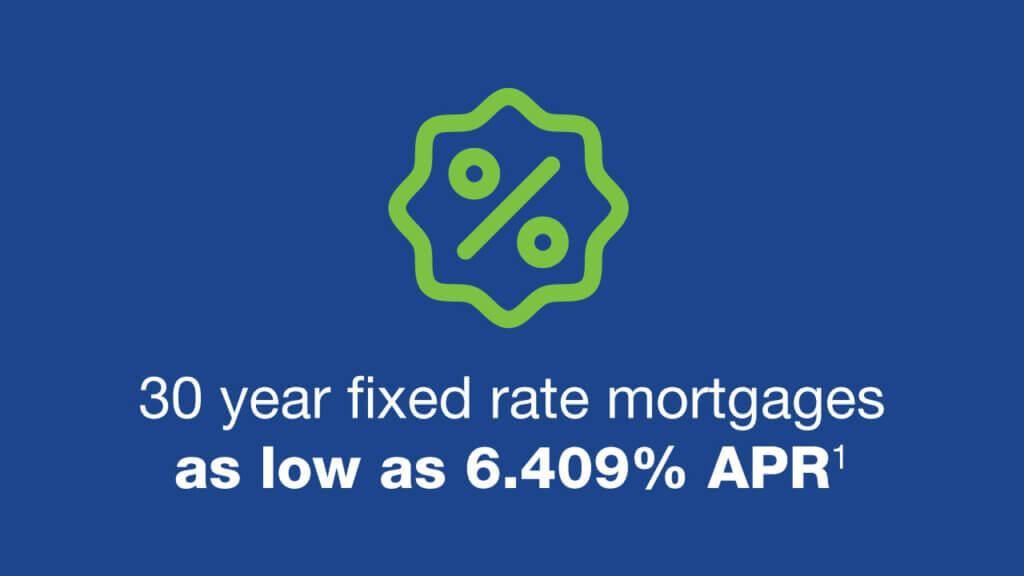A mortgage refinance can help lower your monthly payment, pay for home improvements, or consolidate your higher-cost debt. Contact us to learn more about your refinancing options in Nevada and California, or to get started with your application–we’re here to help.
Mortgage Refinance


We’re here to help you meet your homeownership goals! We also prioritize speed for clients, with an average turnaround of only 21 days from application completion to ready-to-close for purchase loans!1
3 Reasons Homeowners Refinance Their Homes
To answer that, first, we need to understand what happens when a mortgage is refinanced, and what it might mean for you as a homeowner.
Put simply, mortgage refinancing describes the process of paying off your existing home loan with a new home loan–usually, one that has better terms and/or interest rate. Over the years, as your financial situation and interest rates change, refinancing can help you save money, pay off your mortgage more quickly, and even draw on your home equity for projects and purchases that make your home that much sweeter.
Refinancing can be a strategic move for you as a homeowner. But before you decide, we recommend plenty of careful consideration and planning. Here are some of the most common reasons you may decide to refinance your home loan.
1. Lower Your Interest Rate
Interest rates for home loans change over time. Last year’s rates might not be the same as they were ten years ago when you purchased your existing mortgage–and if they’re lower, it may be wise to refinance and lower your monthly payment. This can be helpful when it comes to growing your savings, paying off other debt, or cutting costs when money is tight.
Also, refinancing from an existing longer term loan to a new shorter term loan can help you pay off your home faster, but requires a higher monthly payment. We can help you figure out the options that work best for your individual situation.
2. Consolidate Debt
Refinancing your mortgage can help you consolidate high-interest debt into a low-interest home loan. Credit cards, student loans, and car loans are all examples of loans that can be rolled into a single low-interest monthly payment, providing a path to lowering your expenses and paying down otherwise high-cost debt.
3. Cash Out Your Equity
Thinking of making home improvements, but don’t have cash on hand? Refinancing your mortgage lets you utilize your home’s equity to fund projects that might otherwise be unaffordable. Plus, you can even use that equity to increase your home’s value over time. Learn more about strategic moves you can make with your home equity.
Refinance rates can change quickly–not just year-to-year, but month-to-month or even hour-to-hour, too. Stay vigilant and keep an eye out for opportunities to strategically refinance. (We certainly are.) A lower rate could open new doors for you and your family, especially when you consider the extra cash you’ll have in your pocket every month.
Mortgage Refinance Rates
Need to refinance now? Get a comprehensive picture of current mortgage rates and explore your options with help from our team. Track APRs (annual percentage rates) using the tool below and never miss an opportunity to save on the cost of the loan.
Contact us today to learn more about current mortgage rates.
Want to Run a Test Scenario?
We offer a mortgage loan refinance calculator for you to see how refinancing could work out for your new estimated monthly payment, including if 30 years or 15 years works best for your goals. This is just one of several free online mortgage calculators about various home loan related scenarios for you to use at any time.
Ready to Refinance? Compare Your Options
Mortgage refinancing isn’t a one-size-fits-all move. When you’ve decided to refinance, you have the option of choosing a product that aligns more closely with your goals based on your personal risk tolerance, current interest rates, and how long you plan to stay in the home.
Fixed Rate Mortgage
If you like to keep your finances simple and predictable, a fixed rate mortgage could be the best option. It locks in a new interest rate for the life of the loan, and though the amount paid towards the principal and interest may vary from month to month, the total payment stays the same. Learn more about fixed rate mortgages.
Adjustable Rate Mortgage (ARM)
Planning on moving in the next few years? Feeling good about future interest rates? Consider an adjustable rate mortgage (ARM). Depending on the ARM loan you choose, your interest rate may adjust every six months or a year after the initial fixed period. ARMs can be complicated, so contact us to discuss the details.
5/5 ARM
Discover a middle ground between fixed rate and adjustable rate mortgages with a 5/5 ARM. It’s a hybrid loan with a locked-in rate that adjusts every 5 years after the initial fixed period.
How Does Refinancing a Home Work?
Ready to refinance, but not sure where to start? The first step is assessing your finances–even before you fill out an application. Greater Nevada Mortgage offers no-cost, no-obligation consultations, so reach out for more in-depth information about different mortgage products and services.
Apply for Refinancing
Before you begin your application, it’s a good idea to gather essential documentation ahead of time. You will typically need your W2s, bills, and recent account statements to streamline the process.
Lock in Your Interest Rate
A mortgage rate lock (or rate protection) stops your current loan’s interest rate from rising between the time you apply and the time you close on your new loan.
Underwriting & Appraisal
In the course of reviewing your mortgage file, your underwriter may request a home appraisal to ensure your lender offering matches your home’s appraised value.
Close on the New Loan
Closing means signing a bit of paperwork, so be sure to read carefully. Have your ID and be prepared to pay any outstanding items not included in your new loan.
Common Questions About Refinancing
-
What lower-income borrower options are available?
If you earn a little less, or you’re on a tight budget, there are still many refinancing options available for homeowners. The Federal National Mortgage Association (more commonly known as Fannie Mae) offers a low-income borrower refinance option. If you earn 80% or less of the median household income for your area, you may be eligible for assistance.
RefiNow is only available for Fannie Mae loan borrowers. It may not be used to refinance a loan from another source (FHA loans and USDA loans, for example). Learn how to apply for a Fannie Mae RefiNow.
-
What documents do I need to apply for mortgage refinancing with Greater Nevada Mortgage?
To refinance your home loan with Greater Nevada Mortgage, we’ll ask that you include a few key documents with your application. Here’s a handy checklist:
- Proof of income (W2, 1099s, pay stubs, or tax returns)
- Bank statements (including any investment accounts)
- Proof of insurance (homeowners and title)
- Asset statements (stocks, bonds, savings, etc.)
- Debt statements (credit, auto, student loans, etc.)
-
How much does it cost to refinance?
Closing on your new mortgage is very similar to the process of closing on your original mortgage. So, as with purchasing any new home, you should expect to pay some closing costs.
If you’re still considering whether refinancing is a financially sound move, here’s an easy test: if you can recoup your closing costs in monthly savings in under four years, and you will be in the house longer than this, refinancing is a smart move. If it takes longer than this to recoup your closing costs in monthly savings, it might not be the best choice for you right now, unless your are doing a cash out refinance and need the funds for a project or large expense..
Try our handy mortgage calculator to get a snapshot view of your projected costs and savings.
-
How soon after closing can I refinance?
If you’ve only recently closed on your house and you’re interested in refinancing, consider this: most lenders generally require three or four payments on your current mortgage loan before you try to refinance. Otherwise, how soon you can refinance depends on the type of loan you have, loan terms, your lender’s prescribed waiting period and your qualifications.
-
Will refinancing impact my credit?
When you refinance your mortgage your credit score may be affected for two reasons.
The first reason is if you have multiple inquiries for other credit around the same time, then an additional inquiry may impact your score when your credit is pulled. The second is because you’ll have taken on new debt.
Don’t skip payments during the refinancing process. It’s important to make mortgage payments on time, even if you think you’ll be closing soon. Adhering to your payment schedule can help protect your credit score.
1Annual Percentage Rate (APR) is based on a loan amount of $450,000 at 80% Loan-to-Value with a credit score of 700 for conforming loans. Rates and fees are subject to change without notice. Membership with Greater Nevada Credit Union is required prior to loan funding, which is open to anyone living or working in any of Nevada’s 17 counties and members of their immediate family. Average purchase loan turnaround time is based on application completion to final approval, with all required conditions and guidelines being met awaiting the Close of Escrow date, for January 2025. This is not a guaranteed timeframe for all loan applications. Each loan transaction is different, and individual turnaround times will vary.

